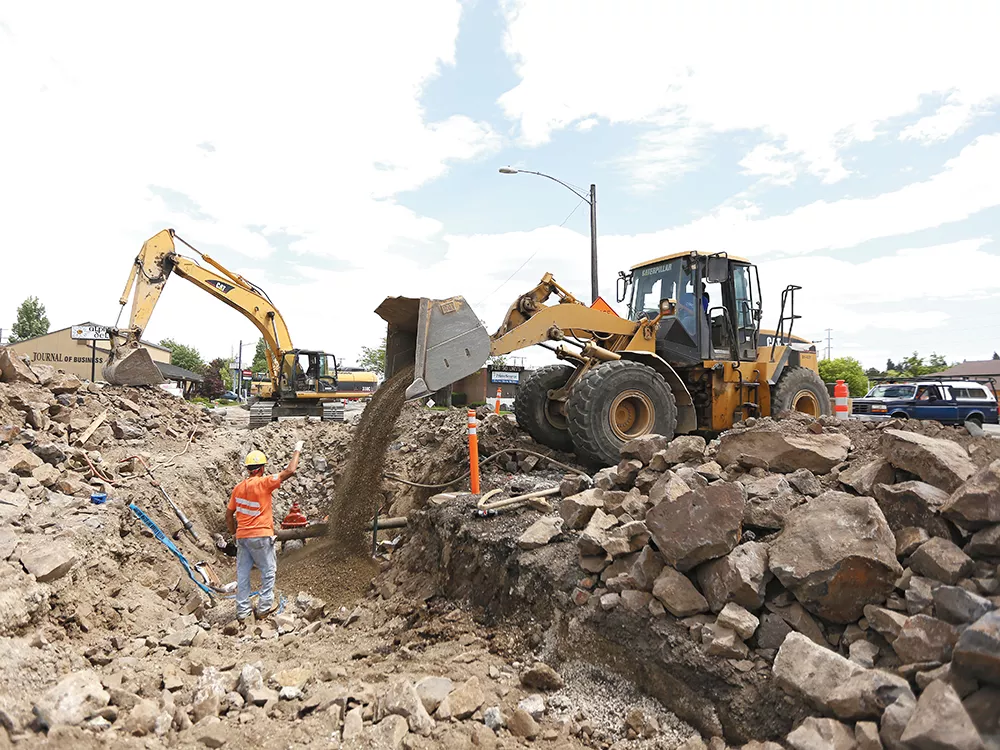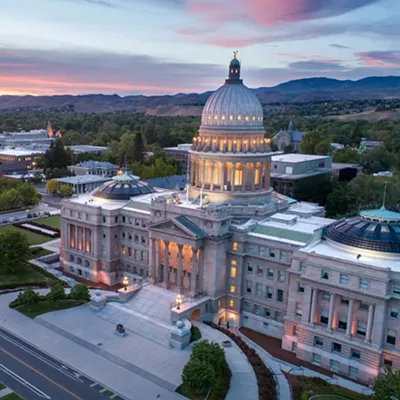The pipes are like uncooked spaghetti, Dan Kegley says.
They fill with water and then empty, as the ground around them freezes and thaws, but sometimes when they should bend, they snap instead.
Of the 1,100 miles of water pipes buried under Spokane, several hundred miles worth are made of a compound called leadite, used only during a blip in the nation’s history and now catching blame for water leaks and pipe bursts across the country.
“Look around Spokane, and you’ll see a lot of ‘50s-style homes,” says Kegley, interim director of the city’s water department. “Chances are there’s leadite in the main in front [of those].”
Leadite, a sulfur cement compound, is also part of the reason about 20 percent of the water the city of Spokane pumps to be used in homes or businesses seeps into the ground before it can ever arrive at a faucet.
The leadite pipes are left over from the period during World War II when Spokane and other cities across the country were growing, but the nation’s best building materials, including lead, were being used to make essentials like bullets. Before the war, most pipes were made of cast iron; afterward, with rubber joints that were more flexible. But throughout the war years it was those brittle leadite pipes and joints that helped build Spokane.
Most of the railroad hub’s downtown had been developed, but its northern and southern edges were beginning to sprawl, so those are the areas of town with the densest concentration of leadite pipes now starting to leak or break.
“Those are the kind of pipes we want to replace,” says city spokeswoman Marlene Feist. “You’re going to see a more aggressive effort to do so.”
Last year, the city’s 20 percent leakage rate equated to 4 billion gallons of water, or the equivalent of one house along each mile of the city’s water pipes leaving a garden hose running around the clock. At the minimum water rate charged to residential users, the loss was worth about $1.44 million. And it’s double the 10 percent three-year average mandated by the state and regulated by the Washington Department of Health, putting the city in violation of state law.
Cities have until July 1 to report last year’s leakage rates, but based on the most recent data available, Spokane’s current three-year average of 19.5 percent is far surpassing other cities. Tacoma’s three-year average is 5.8 percent; Vancouver’s is 3.5. Seattle’s and Bellevue’s are both less than 6 percent.
“We have a plentiful aquifer, but not a limitless aquifer,” Feist says. “[So] it is a number of concern to us.”
A concern, but not the top priority, she clarifies. There’s little enforcement of the standard, though cities operating above it are asked to develop plans to get their leakage down, and it’s not affecting pressure or water supply to Spokane’s homes and businesses. Kegley adds that since the city sits directly over the Spokane Valley-Rathdrum Prairie Aquifer, leaked water mostly ends up back in the aquifer.
Michael Dexel, who oversees these regulations in the Department of Health’s water efficiency program, says it’s not always that simple. Leaks don’t usually happen at the same place where water is pulled from the aquifer, so some water can be lost on its way back through layers of soil to the aquifer or can end up in the river. And pumping lost water is a cost for which cities see no benefit.
Other factors could be affecting Spokane’s rate, city officials say. Because leakage is calculated as the difference between water pumped and water sold, inaccurate meters or water from hydrants used freely by street crews or firefighters could be skewing the numbers. Utilities Director Rick Romero says while he doesn’t believe those factors are contributing to a majority of the 4 billion gallons lost, his department will be working to identify exactly where the losses are happening for a more accurate picture.
Recently, the utilities department has combined funds to try to spend smarter on upgrades that could help decrease the leakage rate and curb costly and damaging water main breaks. They want to start replacing faulty pipes at every chance possible, to find what Romero calls “sweet spots” where a sewer line replacement or other project that requires tearing up a road can be leveraged into a water line replacement. According to the department’s six-year spending plan, it budgeted about $30 million for capital projects, including water line repairs and replacements, last year. Feist says that could double to $60 million this year in an effort to keep up with continually aging infrastructure.
It’s a demand that looks unlikely to subside anytime soon. In a study out last week, the Environmental Protection Agency estimated that the country’s drinking water utilities need about $384 billion worth of upgrades — $9.5 billion in Washington state alone — over the next 20 years for “public health, security and [the] economic well-being of our cities, towns and communities.”



















